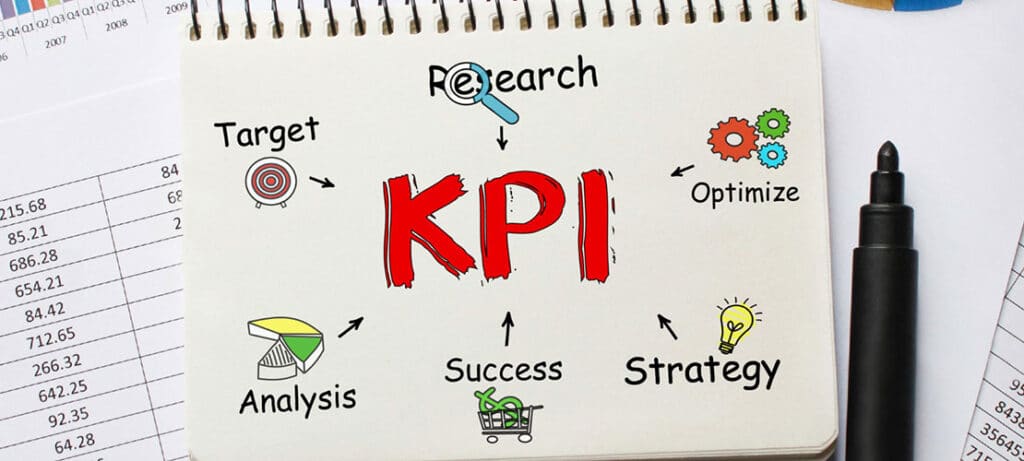Account Manager KPIs: The Essential Metrics to Track Success
Account Managers are in charge of fostering connections between customers and companies. They are responsible for fulfilling the customer’s needs while reducing churn and bringing in revenue for the business. However, how will you truly know if it’s your account manager’s efforts or if your products or services keep your customers around? If you’re seeing consistent churn month over month, what is the true cause of it?
The only way to know if the account managers at your business meet their goals and keep customers satisfied is with well-thought-out KPIs for account managers. KPIs are key performance indicators. These metrics provide an inside look into your account managers’ performance and ability to keep your existing customers happy and satisfied with your business.
Frequent interactions with key account managers are crucial to enhance client satisfaction and foster long-term business relationships.
We’re here to walk you through the most important account manager KPIs, so you can keep track of their performance and look for new opportunities to improve the customer-company relationship.
To effectively track and analyze these KPIs, consider using a tool like Spinify. Spinify is a sales gamification platform that makes it easy to monitor account manager performance. It integrates with your CRM and other data sources, offering real-time dashboards and leaderboards to visualize individual and team progress towards KPIs.
Here’s everything you need to know about our top 10 account management KPI examples.
Account Manager KPIs for Business Development: Track Success, Drive Growth
In the realm of business development, Key Performance Indicators (KPIs) stand as crucial metrics that guide organizations in evaluating and enhancing their growth strategies. Serving as quantifiable measures, KPIs enable businesses across various sectors to track their progress towards achieving key objectives, optimizing operations, and boosting overall productivity. By effectively leveraging KPIs, companies can gain valuable insights into their performance, facilitating data-driven decisions that propel both the success of their development initiatives and the achievement of their employees.
Essential Account Manager KPIs: Boost Performance and Achieve Goals
Key performance indicators provide invaluable insight into your team’s success and business process. With KPIs, you can create a data-driven strategy that aligns with your and your customer’s needs.
Customer-centric tracking methods are essential to assess discrepancies in the performance of key account managers. Frequent interactions with these managers can enhance client satisfaction and foster long-term business relationships.
Account manager KPIs are especially important for a few reasons. Here are the top five:
Improve customer satisfaction
Everything key account managers do is for the customer. Their main priority should be to improve customer satisfaction scores and increase customer lifetime value. If your team doesn’t go above and beyond to keep the customers happy, your account management metrics will show this.
Understand employee performance

Are your employees reaching their performance goals? Are they going out of their way during the work week? The only way to find out is to analyze the data and consider the account management metrics. With this data and analysis, you’ll always have a pulse on your team’s monthly, quarterly, and annual performance.
You can then use this data to help them restructure their personal goals and keep them on track for success. Additionally, evaluating the performance of key account managers is crucial. By using customer-centric tracking methods, you can assess discrepancies in their performance and provide tailored support to enhance client satisfaction and foster long-term business relationships.
And that’s where Spinify comes in! Our gamification platform makes tracking those essential metrics engaging and motivating for your team. With leaderboards, contests, and real-time progress updates, employees gain clear visibility into their goals. This data-driven approach, infused with a bit of friendly competition, encourages them to step up their game and strive for success. Plus, you’ll gain greater insight into individual strengths and areas for development, allowing for more tailored support.
Stay on top of revenue and retention goals.
The truth is – it’s easier to keep current customers than it is to bring in a new prospect. Studies suggest acquiring a new customer can cost five times the amount to retain your existing customers. This means account managers must keep up with customer interaction and keep customers committed to their business. If they are engaged with your products and services, it can positively impact your revenue numbers and lead to high churn rates.
Readjust your business approach.
Every year brings new challenges and changes for businesses. This means you’ll need to readjust your business strategy and your approach to meet the needs of your customers and your business. With the right account manager KPIs, you can identify problems before they impact your business. This means you can determine new ways to improve the sales process, your marketing initiatives, and the client relationship by staying on top of the right metrics.
Reduce churn rates
One of the key aspects of an account manager’s job is to reduce churn and keep more clients on file. With the right key performance indicators, you can identify which key account managers can’t keep a high customer satisfaction score and who can. Frequent interactions and customer-centric tracking methods are essential to assess discrepancies in the performance of key account managers. This will help you find new opportunities and help you identify the top performers at your company. Plus, the lower the churn rate, the more your business will grow and scale in the coming years.
Understanding Account Manager KPIs
Account manager KPIs are essential metrics that help organizations evaluate the performance of their account management teams. These KPIs provide valuable insights into the effectiveness of account managers in managing customer relationships, driving revenue growth, and achieving business objectives. By tracking these key performance indicators, businesses can ensure that their account managers are meeting their goals and contributing to the overall success of the company.
Account managers play a crucial role in maintaining and nurturing relationships with existing customers. They are responsible for ensuring customer satisfaction, increasing customer lifetime value, and reducing churn rates. By monitoring KPIs such as customer satisfaction scores, customer lifetime value (CLV), and customer retention rates, organizations can gain a better understanding of how well their account managers are performing and identify areas for improvement.
In addition to customer-focused KPIs, it’s also important to track metrics related to the account managers’ own performance. This includes KPIs such as average revenue per user (ARPU), upsell and cross-sell rates, and employee satisfaction. By keeping a close eye on these metrics, businesses can ensure that their account managers are motivated, productive, and aligned with the company’s goals.
What are KPIs in Sales?

KPIs in sales refer to measurable values that demonstrate how effectively a sales team is achieving its key business objectives. These key performance indicators cover various aspects of the sales process, from lead generation to closing deals. By using KPIs, organizations can assess their sales performance, identify areas for improvement, and make informed decisions to drive growth.
Sales KPIs are crucial for understanding the effectiveness of the sales process and the performance of the sales team. They provide valuable insights into how well the sales team is converting leads into customers, the efficiency of the sales process, and the overall health of the sales pipeline. By tracking these metrics, businesses can identify bottlenecks, optimize their sales strategies, and ensure that their sales team is on track to meet their targets.
Some common sales KPIs include customer acquisition rate, sales cycle length, close ratio, and sales growth rate. Each of these metrics provides a different perspective on the sales process and helps organizations make data-driven decisions to improve their sales performance.
Measure What Matters: 10 Essential Account Manager KPIs
When setting KPIs, you’ll want to choose at least 2-4 that you stay on top of consistently. If you track too many KPIs, you’ll lose track of what matters most, which leads to data overload.
Consider your unique business model and what goals matter to you most. Is it monthly recurring revenue or leads? Do you want to improve customer satisfaction, or do you want to enhance your organic growth?
Once you know your unique goals, you can choose the best KPIs for your business.

Here are our top 10 account management KPI examples to help you get started:
Customer Churn Rate.
(Lost Customers /Total # of Customers You Have For a Time Pardon) x 100
Your customer churn rate calculates customer attrition. This is the rate at which customers stop doing business with you. This is a must-follow metric for any company with a recurring business model. For example, let’s say you’re a marketing agency. Customers likely sign a six-month or a-year contract. You’ll want to use your churn rate to understand how many clients stay on the file and how many fall off once their term is complete. Churn is also important for SaaS, Subscription-based, and other service-based businesses.
On a daily basis, an account manager must answer client problems, engage with them, and provide the best possible customer experience for each client. If you notice an uptick in churn, you can go back to each account manager, get to the root of the problem, and find new ways to engage with that customer.
To calculate your customer churn rate, you’ll want to start by picking a period. Whether monthly, quarterly, or annual, take the number of clients you had at the beginning of that period and then divide it by how many clients you lost. Then times the number by 100. This will give you your churn rate.
Once you have this key metric, you can start making meaningful changes to your business strategy to ensure your existing customers get the hands-on care they need from each account manager.
Customer Acquisition Rate.
Cost of Sales + Cost of Marketing/ New Customers = Customer Acquisition Rate
The custom acquisition rate refers to how many new clients your account managers can acquire. This KPI is important to keep track of, especially if your account managers are integrated into your sales process or work hands-on with other sales professionals.
The customer acquisition rate looks at your team’s interactions throughout the day. This includes cold calling, emailing, scheduled demos, client meetings, and any other customer interactions they have on an ongoing basis. With this KPI, you can understand how many clients are obtained with these sales methods.
For example, you may find that emails and cold calls only bring in 10% of your new customers, booked demo calls are 30%, and in-person client meetings are the other 60%. With this KPI, you can fine-tune your selling strategy and readjust your resources to meet the needs of your paying prospects.
Upsell and Cross-Sell Rates.
Upsell or Cross-Sell = Upsell/Cross-Sell Venue/Total Revenue
Once you nurture a lead into a paying customer – the selling doesn’t stop there. Your account managers must spend time upsetting and cross-selling to your current customers. This will help you slowly increase the average customer lifetime value and strengthen your connections with current paying customers.
Upsell and cross-sell rates also provide valuable insight into your employee’s performance. Who has the highest customer upsell revenue? Who still needs to bring in cross-sells that month? Are there certain products or services that pair well together with others? This information is valuable to your business success and will help you restructure your sales coaching initiatives to meet the needs of each individual.
Average Reply Time.
ART = Total time to respond to client/ # of tickets
Did you know 90% of customers expect an immediate response to customer service questions? A big part of an account manager’s role is customer interaction. As a leader in the workplace, you’ll want to always have a pulse on how attentive your team is to your customers and how quickly they reply to prospects and current customers. If it’s taking your team longer than 24 hours to answer a simple question – it can negatively impact customer satisfaction.
While ART is typically a customer success metric, you can use this metric to understand your team’s commitment to their clients. If your account managers need help responding to emails and phone calls, it could positively impact your pipeline and the overall customer experience.
Customer Lifetime Value.
CLTV= Customer Value X Average Customer Lifespan
Once you acquire a customer, you’ll want to look for innovative ways to increase the customer’s lifetime value. Whether selling them on a new service, increasing the account size, or cross-selling other products – these small sales initiatives can have a major impact on your revenue goals.
Once you have a pulse on your customer lifetime value, you can predict your customer lifetime value and rethink your strategy while finding new ways to improve your customer retention rate.
Customer Value.
Customer Value = Average Purchase X Average # of Purchases
Increasing customer value can improve customer acquisition and help you target your ideal customer. When you know how much your customers are willing to spend on your products and services, you can use this as leverage during the sales process to help your sales team develop an award-winning strategy that provides results.
Customer Satisfaction.
Your customer satisfaction score provides insight into what your account managers do well, where they can improve, and the overall quality of your product.
To measure your customer satisfaction, you can use the net promoter score. This is a survey that you send to your current customers to better understand your customer interactions. To use the net promoter score, you’ll connect with customers and ask them to rate their experience on a scale from 1-10. Here’s how those responses look:
- Detractor: 0-6
- Passive: 7-8
- Promoter: 9-10
The goal is to keep your customers on the promoter label. Promoter customers are the most likely to recommend your products or services to other customers, and anyone on the 0-6 scale would advise against your products and services.
If you have many detractors, you’ll want to examine why they may need more than your product. You can do this by setting up 1:1 discussions, having your customer success team reach out, or sending them a quick email. This 1:1 combat can help improve the overall customer experience and help you find common challenges.
Sales Cycle Length
Sales cycle length is a critical KPI that measures the time it takes for a sales team to close a deal. A shorter sales cycle length indicates that the sales team is efficient in converting leads into customers. On the other hand, a longer sales cycle length may indicate that the sales team is struggling to close deals, which can impact revenue growth.
Understanding the sales cycle length is essential for optimizing the sales process. By tracking this KPI, organizations can identify stages in the sales process that may be causing delays and take steps to streamline them. For example, if the sales cycle length is longer than expected, it may be necessary to provide additional training to the sales team, improve lead qualification processes, or enhance sales enablement tools.
A shorter sales cycle length not only improves revenue growth but also enhances customer satisfaction. When the sales team can quickly and efficiently close deals, customers are more likely to have a positive experience and become loyal, long-term clients.
Close Ratio
Close ratio is a KPI that measures the percentage of deals closed by a sales team. A high close ratio indicates that the sales team is effective in converting leads into customers. A low close ratio may indicate that the sales team needs to improve its sales strategy or provide additional training to its members.
The close ratio is a valuable metric for assessing the effectiveness of the sales team’s efforts. By tracking this KPI, organizations can gain insights into how well the sales team is performing and identify areas for improvement. For example, if the close ratio is lower than expected, it may be necessary to review the sales process, provide additional training on objection handling, or refine the sales pitch.
Improving the close ratio can have a significant impact on revenue growth and customer satisfaction. When the sales team is effective in closing deals, it not only drives revenue but also builds trust and credibility with customers, leading to long-term relationships and repeat business.
Sales Growth Rate
Sales growth rate is a KPI that measures the increase or decrease in sales revenue over a specific period. A high sales growth rate indicates that the sales team is effective in driving revenue growth. A low sales growth rate may indicate that the sales team needs to improve its sales strategy or provide additional training to its members.
Tracking the sales growth rate is essential for understanding the overall health of the sales team and the effectiveness of the sales strategy. By monitoring this KPI, organizations can identify trends, assess the impact of sales initiatives, and make data-driven decisions to drive growth.
A high sales growth rate reflects the success of the sales team in generating new business and expanding existing customer relationships. It also indicates that the sales team is aligned with the company’s goals and effectively executing the sales strategy. On the other hand, a low sales growth rate may signal the need for adjustments in the sales approach, additional training, or changes in the sales process.
By tracking these KPIs, organizations can gain valuable insights into the performance of their account management teams and make informed decisions to drive growth and improve customer satisfaction.
Employee Satisfaction.
Employee satisfaction is just as important as customer satisfaction. If employee morale is down and your team is burnt out, it can negatively impact your customer experience. With a strong understanding of employee satisfaction, you can ensure your team has the resources and support they need to continue to make meaningful connections with clients.
The best way to measure employee satisfaction is to ask for feedback through a survey. You can also use the same net promoter score you’d use for customer satisfaction. To boost engagement and make the process more enjoyable, consider using a gamification platform like Spinify. Spinify can turn surveys and feedback into fun challenges with rewards, keeping your team motivated to provide valuable insights.
For the best results with this KPI, you’ll want to regularly check in with your team, monthly or quarterly.

Average Revenue Per User.
ARPU = MRR/ # of current customers
Your ARPU helps you understand your average revenue per user. This metric is used to help you grow your monthly recurring revenue and lifetime value and can help you predict future revenue. With this KPI, you can identify high-paying customers and brainstorm innovative ways to increase your average revenue per user.
If your average revenue per user is higher than your most basic product or service, it can also be a testament to the value your company provides to customers.
Cost Per Lead.
CPL = Total marketing spend/ total number of leads
Cost per lead determines how much your company has to spend to acquire a lead. Leads are prospects that have yet to turn into customers. This considers the total marketing spend you have allocated to filling in the top of the funnel with viable leads for your account and sales managers.
Cost per lead ensures you look at all aspects of your customer journey. While leads don’t always equate to revenue, they are integral to any sales funnel. You need more viable leads constantly cycling through the sales funnel to have the tools you need to scale your company and bring in new business in the future.
This KPI ensures you always have a pulse on your marketing spend. It also ensures you aren’t overspending for the number of leads you bring.
Lastly, cost per lead can also show you which initiatives bring in the most leads to your business so you can re-strategize your initiatives for that specific conversion type. Whether it’s form submissions, phone calls, or emails – once you know your account managers will have the data they need to rethink their work week for the better.
Organic Growth.
Organic growth looks at how your current customers help your business grow. It looks at how engaged your customers are with your products and services and how often your customers refer individuals to your business. With this metric, you’ll understand how much of your sales come from customer referrals, who is a repeat customer, and how well your account managers are selling upsells and cross-sells.
This metric looks at everything outside your marketing initiatives and provides a new perspective on your company’s overall image and rapport.
Boost Your Sales Metrics: How to Improve Performance
If you aren’t able to grow your business or aren’t seeing the results you want with the KPIs, it may be a problem outside of your products and services. As a leader in the workplace, you should always look for innovative ways to improve the sales process and employee experience, not just the customers. Your sales team is the driving force for success. They are the ones that are making connections with prospects, bringing in new business, and bringing new clients to your account managers.
If you see a flaw in your sales process, here’s what you can do:
- Gamify the sales process: Gamification is a powerful tool that helps your sales team and account managers find a newfound motivation for the workplace experience. Whether it’s with sales leaderboards, progress bars, or badges – these badges will help inspire your team to do more. (and have fun while doing it!
- Implement sales coaching: Sales coaching will help your team stay on track for their goals. Taking the time to meet with them quarterly and monthly will help you identify challenges and opportunities to improve.
- Make changes based on data: Once you start tracking KPIs, they can be invaluable tools for your business. You can create a results-driven strategy backed by data, insights, and analytics.
- Check-in with your customers: Remember your customers! If you find a downturn trend, you can schedule 1:1s, send out surveys, and continue to check in on your top-performing customers. This will help you find new opportunities to improve your customer experience.
Improve Customer and Employee Satisfaction With Spinify.
Being an account manager is a rewarding but demanding role. Balancing customer needs with business goals requires constant focus and adaptability. To empower your team for success, invest in tools that streamline their workflow and boost motivation. Spinify harnesses the power of gamification to transform work into an engaging experience. With leaderboards, contests, and rewards, Spinify fosters collaboration, friendly competition, and a sense of accomplishment – leading to elevated employee satisfaction.

Data-Driven Account Management: Track KPIs and Gamify the Workplace with Spinify
Account managers are the bridge between your business and its valued customers. To ensure their success, it’s vital to track key performance indicators (KPIs) and invest in tools that fuel motivation.
Spinify helps you monitor essential account management metrics and transforms the workplace with gamification.
The result? Happier employees, more satisfied customers, and a stronger bottom line. Request a demo today and see how Spinify can revolutionize your account management team.






